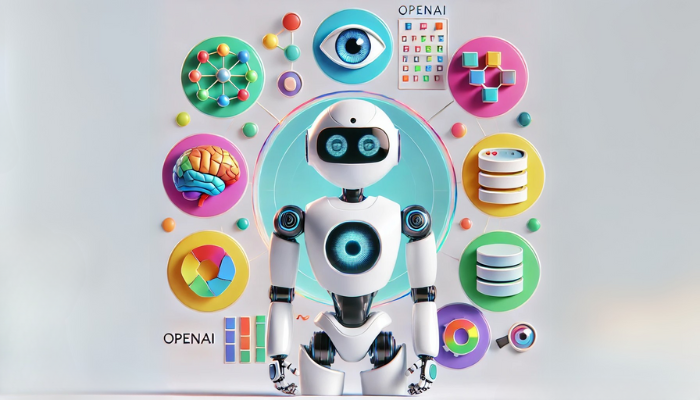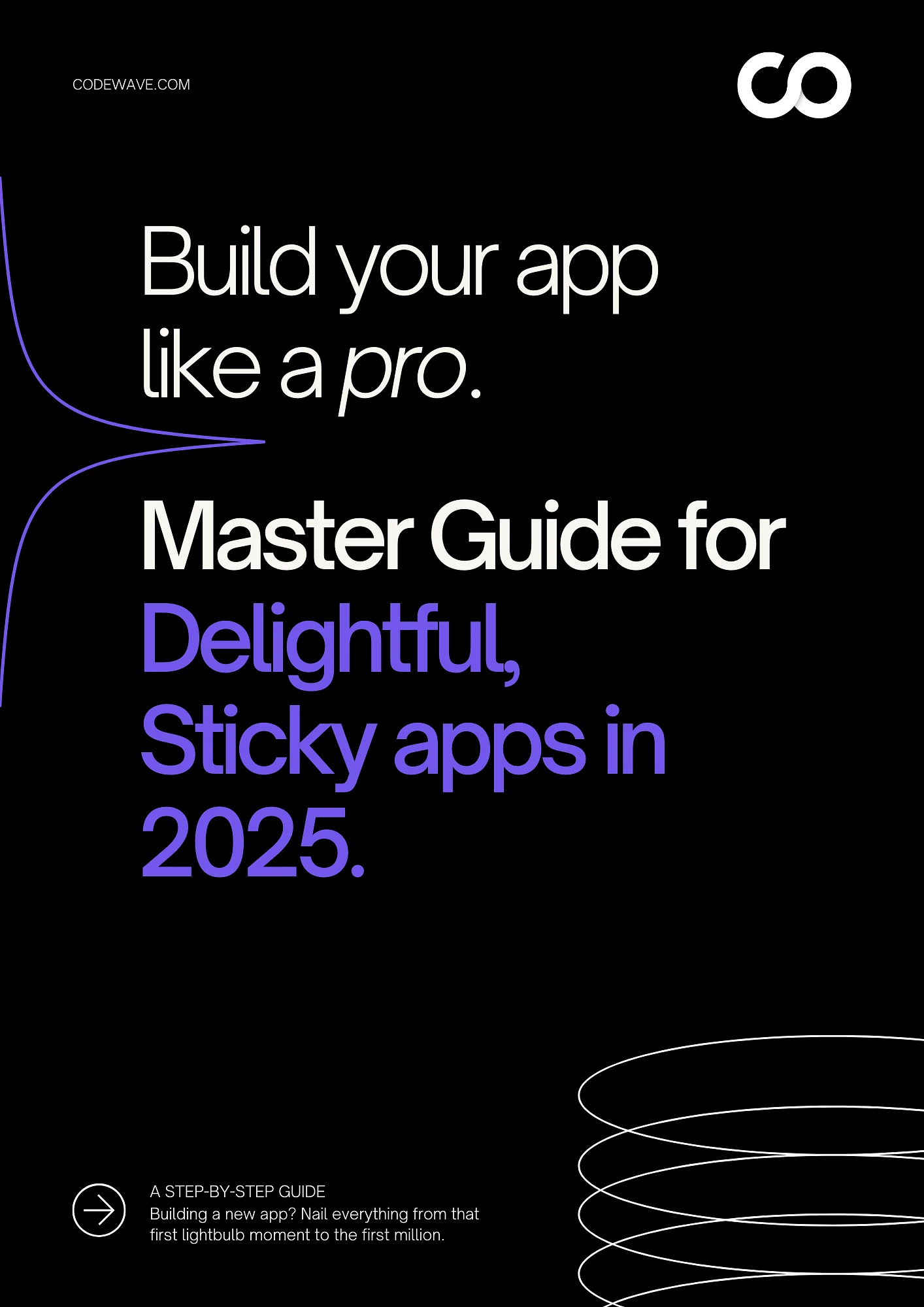OpenAI has taken the world by storm since the launch of ChatGPT in 2022. It disseminated the perks of using Artificial Intelligence (AI) to the general public by releasing the generative AI, and hasn’t stopped since then. It’s not that AI is an entirely new concept. However, its integration in business processes has increased significantly in the past couple of years.
According to a survey by Langchain, about 51% of respondents use AI agents in some form or another in business operations. Among these, mid-sized companies (100 – 2000 employees) are most active in using these agents at 63%.
Though AI has been working behind the scenes for a while now, its rapid advancement has introduced new tools and frameworks that make development more streamlined, versatile, and scalable. One such framework, OpenAI’s Agentic Framework, has gained attention for its minimalistic design and focus on enhancing AI workflows.
However, you may wonder how this framework functions. In this blog, let’s look at a detailed exploration of the framework, focusing on its core features, functionalities, and development applications for AI developers.
Introduction to OpenAI’s Agentic Framework
OpenAI’s Agentic Framework is an advanced, minimal, and lightweight platform for AI development. Designed with simplicity in mind, it aims to allow developers by providing a streamlined way to manage and orchestrate multiple agents within a workflow. Unlike many traditional frameworks, the Agentic Framework avoids unnecessary complexity, making it particularly suitable for tasks involving multi-agent systems.
The framework’s primary goal is to simplify the development process while maintaining flexibility. Developers can seamlessly integrate AI agents to handle specific tasks, reducing the overhead of more complex server-side architectures. This simplicity enhances workflow efficiency and makes it a suitable choice for various applications, especially in academic, research, and developmental contexts.
How is it Different From a Traditional Single-Agent AI Framework
The Agentic Framework stands out from traditional single-agent AI frameworks primarily due to its design philosophy and its ability to handle multiple agents within a unified workflow. While single-agent systems are focused on individual tasks or processes, the Agentic Framework introduces the concept of multiple agents that can interact, collaborate, and delegate tasks to one another, creating a more dynamic and efficient AI workflow. Here are the key differences:
| Feature | Single-Agent AI Framework | Agentic Framework (Multi-Agent) |
| Architecture | A single agent handles all tasks and queries. | Multiple agents work collaboratively, each specializing in a task. |
| Task Specialization | Generalist approach, handles a variety of tasks in one agent. | Task specialization occurs where each agent is designed for a specific function. |
| State Management | Typically manages state to retain past interactions or data. | No state storage or retrieval; each agent works independently without memory. |
| Scalability | Limited scalability, as a single agent handles all tasks. | Easily scalable by adding more agents to handle additional tasks. |
| Flexibility | Less flexible when handling diverse or complex tasks. | Highly flexible due to modular nature; new agents can be added without disrupting the system. |
| Development & Maintenance | Complex to maintain as it grows, it requires deep customization. | Simplified development and maintenance with independent agents. |
| Task Handling Efficiency | Less efficient in handling complex, multi-faceted tasks. | More efficient as tasks are divided among specialized agents. |
| Memory/Contextual Awareness | Retains memory and context for continuity. | No memory or context retention, focusing on simplicity. |
| Tool Usage | May rely on external tools or integrations within a single system. | Can handle parallel tool calls, with each agent interacting with specific tools. |
| Ideal Use Case | Best suited for simpler, more straightforward applications. | Ideal for complex workflows with varying tasks and agent collaboration. |
Now that we have a clear picture of OpenAI’s agent AI, let’s go in-depth into its core features.
Also Read: Exploring Multi-Agentic AI Systems and Their Impact on Work
Core Features of the Agentic Framework
OpenAI’s Agentic Framework is designed to provide a minimalist and efficient approach to AI development. It prioritizes simplicity, speed, and flexibility, making it an attractive solution for developers who want to streamline multi-agent systems without dealing with complex infrastructure. Here’s a detailed look at the core features:
1. Client-Side Operation
A key feature of the Agentic Framework is its client-side operation, which means that it runs entirely on the client’s machine without needing to interact with a server. This offers several distinct advantages:
- Reduced Server Dependency: The framework eliminates the need for external servers, reducing reliance on cloud services or backend infrastructure. This makes deployment faster and easier. Codewave, for example, specializes in building AI solutions and such lightweight systems that allow for rapid deployment and minimal overhead.
- Faster Execution: Since the framework operates locally, there is no delay caused by server-client communication. Tasks are processed more quickly, providing a faster response time, which is crucial for real-time applications.
- Simplified Data Management: All data is processed locally, avoiding complexities related to data transmission, storage, and security. As a developer, you can focus solely on the logic and execution of the AI tasks without managing server-side systems.
- Increased Flexibility: Local execution means that developers have full control over the environment, enabling easier testing, debugging, and adjustments without the constraints of cloud-based setups.
Overall, the client-side model streamlines the development process, enabling faster iterations and greater control for developers.
2. Minimalistic Approach with No State Storage
OpenAI’s Agentic Framework takes a minimalistic approach by avoiding state storage and data retrieval functions. This decision has several important implications:
- Simplicity and Efficiency: Without the need to store past interactions, the framework focuses purely on the task at hand, minimizing overhead. There’s no need to manage or retrieve state information, which keeps the system lightweight and fast.
- No Memory Management: The framework doesn’t retain context between tasks, simplifying the logic and reducing the computational burden associated with memory management. This is particularly advantageous when working on projects where data persistence isn’t required. Codewave can help you build real-time, task-based AI solutions without unnecessary complexity, allowing you to focus on achieving business goals.
- Task-Focused Execution: With no memory, each task is treated as an isolated operation, which ensures that the system is optimized for speed. This makes it ideal for short-lived interactions or one-time tasks that don’t need to reference previous states.
- Lower Resource Usage: Without the complexity of managing stored data, the framework uses fewer resources, ensuring efficient execution even in resource-constrained environments.
- Scalability: The absence of state storage allows for easy scaling. New agents can be added to the system without the need for synchronization between them, simplifying the overall architecture.
While this design decision limits the framework in cases where contextual memory is needed, it ensures high performance and simplicity, making it ideal for many real-time, task-based AI applications.
Now that you’re aware of the core features of OpenAI’s agent framework, let’s see how to set it up.
Also Read: Understanding Agentic Process Automation: A Comprehensive Guide
Setting Up the Agentic Framework
Setting up the Agentic Framework is a simple and quick process, especially for developers familiar with Python. This framework is designed to minimize the setup complexity, enabling developers to jump right into building multi-agent systems and task automation solutions. Here’s a more detailed guide on how to get started with the Agentic Framework in Python:
1. Installing Necessary Python Packages
Before initializing the Agentic Framework, ensure that you have the required Python packages installed. These packages include the OpenAI Python client, which provides access to OpenAI models and functionalities.
To install the necessary package, run the following command in your terminal:
| pip install openai |
This installs the OpenAI client library, which is essential for working with models like GPT-3 and integrating with the Agentic Framework.
2. Initializing the Framework in Python
Once the Python package is installed, setting up the Agentic Framework is straightforward. The basic initialization process involves importing the framework’s modules and configuring essential parameters such as the agent’s name, model, and any additional properties you wish to customize.
Here’s an example of how to initialize the framework in Python:
| from openai import Agentic # Initialize the framework with the agent’s name and model agent = Agentic.Agent(name=”Primary Agent”, model=”text-davinci-003″) |
Explanation:
- Agentic.Agent: This initializes an agent within the Agentic framework. The Agent class is the framework’s core, representing an AI agent capable of performing tasks.
- name: You assign a name to your agent (in this case, “Primary Agent”). This name is used to identify the agent within your system.
- model: You specify which OpenAI model the agent will use. Here, we’re using text-davinci-003, one of the most advanced GPT models available, known for its versatility and performance.
This setup provides a starting point to customize the agent’s behavior and functionality based on the specific needs of your project.
3. Integrating with OpenAI’s Chat Completion Functionality
The Agentic Framework integrates seamlessly with OpenAI’s chat completion functionalities, which are based on the GPT models. This allows developers to build conversational agents, automate customer support, or create task management systems that rely on natural language understanding.
Here’s an example of how to integrate chat completion into the Agentic Framework, enabling an interactive dialogue between the agent and users:
| # Example of chat completion integration response = agent.chat(“What is the weather like today?”) print(response) |
Explanation:
- agent.chat(): This method sends a prompt to the agent (in this case, asking about the weather). The agent uses the specified model (e.g., text-davinci-003) to process the input and generate a response.
- print(response): The response from the agent is printed to the console, which contains the AI’s answer to the query.
This simple integration demonstrates how easily you can build interactive systems where the agent responds to user queries, making it ideal for applications like chatbots, virtual assistants, or customer support systems.
4. Configuring Additional Agent Attributes
The Agentic Framework allows you to define additional attributes and parameters to customize how your agents behave. For example, you can configure instructions, roles, or additional tools that an agent can access to complete specific tasks.
Here’s an extended example of how you can add more attributes to the agent:
| # Initialize the framework with custom attributes agent = Agentic.Agent( name=”Assistant Agent”, model=”text-davinci-003″, instructions=”Assist the user with common queries.”, role=”assistant” ) # Example of chat completion integration with custom instructions response = agent.chat(“How can I reset my password?”) print(response) |
Explanation:
- instructions: You can provide instructions to the agent to define its role or behavior. In this case, the agent is instructed to assist with common queries.
- role: The role attribute helps clarify the agent’s purpose in the workflow. Here, the agent’s role is to assist users, which could impact how it responds to queries.
By adding these attributes, you can better control how the agent interacts with users and tailor its responses according to its designated role in your system.
5. Expanding Agent Capabilities
The Agentic Framework is designed to be modular, allowing you to extend its functionality as needed. For example, you could integrate the agent with external APIs or connect it to databases to process more complex tasks.
Here’s an example of how to add external functionality:
| # Example of integrating external API for additional functionality def fetch_weather_data(): # Simulate an API call to get weather data return “The weather is sunny and 75°F.” agent = Agentic.Agent(name=”WeatherBot”, model=”text-davinci-003″) # Use external function within agent’s task flow response = agent.chat(“What is the weather like today? ” + fetch_weather_data()) print(response) |
In this example, the agent integrates external functionality (fetching weather data) into its workflow. This modularity enables developers to enhance the agent’s capabilities without complicating the underlying framework.
6. Tool Selection and Parallel Tool Calls
The Agentic Framework allows for flexible tool selection. Developers can define specific tools (such as APIs or libraries) that an agent can access to complete a task. Furthermore, the framework supports parallel tool calls, meaning agents can perform multiple tasks simultaneously. This is particularly useful in multi-agent systems where tasks can be distributed across several agents to improve efficiency.
Example of selecting tools for parallel execution:
| tools = [“web_search”, “text_processing”, “image_recognition”] agent.use_tools(tools) |
This allows the agent to interact with the specified tools, enabling efficient multitasking simultaneously.
So, this was the implementation and functionality of OpenAI’s agent AI. Now, let’s look at some examples of workflow in the Agentic AI framework.
Also Read: Understanding AI Agents: A Comprehensive Guide
Example Workflow in the Agentic Framework
The Agentic Framework supports multi-agent systems where multiple agents collaborate to handle complex tasks. In this system, different agents are assigned specific roles based on their specialization. It allows for a seamless handoff of tasks from one agent to another, ensuring that each agent operates within its area of expertise.
Below, we’ll walk through an example of a typical workflow in the Agentic Framework, illustrating how agents work together to complete a task.
1. Primary Agent Handling Requests
In the Agentic Framework, the workflow typically begins with a primary agent, which acts as a dispatcher or controller. This agent is responsible for receiving incoming requests and determining which specialized agent is best suited to handle each task.
The primary agent evaluates the nature of the request and, based on its content, directs it to one of the specialized agents. This approach is ideal for scenarios where the requests could span multiple domains or require different types of expertise. For example, a request could be a question about text analysis, image recognition, or database queries.
Here’s a simple example of how the primary agent might handle incoming requests:
| # Example of primary agent workflow request = “Can you analyze this image for me?” # Primary agent determines the type of request if “image” in request: agent = ImageAgent() elif “text” in request: agent = TextAgent() else: agent = DefaultAgent() # Send the request to the selected specialized agent response = agent.process(request) print(response) |
Explanation:
- Primary agent evaluates the request: The primary agent checks if the request contains the word “image” or “text”, which helps determine whether it should be sent to an ImageAgent or a TextAgent.
- Task assignment: Based on the request type, the primary agent assigns it to the appropriate specialized agent (in this case, either an ImageAgent or a TextAgent).
- Request processing: Once assigned, the specialized agent processes the request and returns the result.
This decision-making process allows the primary agent to delegate tasks to the most suitable agent based on the specific content of the request.
2. Specialized Agents Handling Tasks
Once the primary agent has assigned the task, the specialized agents take over. These agents are designed to handle specific types of tasks based on their function. They operate independently, without needing to refer back to the primary agent for further instructions, which allows for parallel task execution and more efficient workflows.
For example, a TextAgent could be responsible for handling natural language processing (NLP) tasks, such as text summarization, sentiment analysis, or language translation. On the other hand, an ImageAgent might handle image processing tasks, such as object detection or facial recognition.
Here’s an example of how the specialized agents might handle tasks:
| # Specialized agents processing tasks class ImageAgent: def process(self, request): # Image analysis logic here return “Image analyzed: Object detection complete.” class TextAgent: def process(self, request): # Text analysis logic here return “Text analyzed: Sentiment positive.” class DefaultAgent: def process(self, request): # Default logic for unrecognized requests return “Request type not recognized. Please try again.” |
Explanation:
- ImageAgent: This agent is responsible for processing image-related requests. It could contain functionality such as running object detection or facial recognition.
- TextAgent: This agent handles text-based requests. It could be tasked with sentiment analysis, text summarization, or language translation.
- DefaultAgent: This agent serves as a fallback when the primary agent cannot determine the request type. It ensures that all requests are handled, even if they don’t fall within the predefined categories.
3. Seamless Transitions Between Agents
One of the key benefits of using the Agentic Framework is the seamless transition between agents. Once a task is assigned, each specialized agent operates independently, focusing on its specific function without needing to communicate with other agents, unless it is explicitly designed to do so. This independent operation minimizes bottlenecks and enhances system performance.
In the example above, if a request involves both text and image elements, the primary agent can delegate tasks to both the ImageAgent and TextAgent, and they can work in parallel:
| # Handling multiple types of requests simultaneously request1 = “Can you analyze this image for me?” request2 = “Can you analyze this text for sentiment?” # Primary agent delegates to specialized agents image_agent = ImageAgent() text_agent = TextAgent() # Agents process requests in parallel image_response = image_agent.process(request1) text_response = text_agent.process(request2) # Output results from both agents print(image_response) print(text_response) |
Explanation:
- The primary agent delegates two requests: one for image analysis and another for text sentiment analysis.
- The ImageAgent and TextAgent work in parallel, handling their respective tasks independently.
- This parallel processing improves efficiency, especially in complex workflows where multiple tasks need to be completed simultaneously.
4. Extending the Workflow to More Specialized Agents
The flexibility of the Agentic Framework allows you to add as many specialized agents as needed, each handling a specific function. For example, you might have agents for data processing, database querying, voice recognition, or recommendation systems.
Here’s an example of extending the workflow with more specialized agents:
| # Additional specialized agents class DataAgent: def process(self, request): # Data processing logic return “Data processed: Insights extracted.” class VoiceAgent: def process(self, request): # Voice recognition logic return “Voice recognized: Transcription complete.” # Primary agent decides the best agent for each request request = “Can you process the data for me?” if “data” in request: agent = DataAgent() elif “voice” in request: agent = VoiceAgent() response = agent.process(request) print(response) |
Explanation:
- DataAgent: This agent might handle data analysis tasks, such as cleaning or extracting insights from structured datasets.
- VoiceAgent: This agent could be tasked with processing voice data, such as converting speech to text or identifying specific commands.
5. Flexibility in Task Assignment
The Agentic Framework is flexible enough to handle dynamic task assignment. For example, if the primary agent cannot determine the task type immediately, it can consult a list of agents based on predefined rules, or it can escalate the request to a more advanced agent.
| # Dynamic task assignment based on request content def dynamic_agent_assignment(request): agents = [ImageAgent(), TextAgent(), DataAgent(), VoiceAgent()] for agent in agents: if agent.can_handle(request): return agent return DefaultAgent() # Example dynamic request handling request = “Can you recognize this voice?” assigned_agent = dynamic_agent_assignment(request) response = assigned_agent.process(request) print(response) |
Explanation:
- Dynamic assignment: The primary agent checks a list of available agents and assigns the task based on the agent that can best handle the request.
- This approach allows for more complex decision-making processes where task assignments are not strictly based on predefined conditions.
Also Read: Understanding Agentic Workflows: Patterns and Use Cases
Comparisons with Other OpenAI Frameworks
The Agentic Framework is distinct from other OpenAI frameworks in several ways. Its minimalistic, client-side design focuses on simplicity and efficiency, making it ideal for certain tasks but limiting its functionality compared to other, more complex frameworks such as GPT-3 API or fine-tuned models. Below, we compare the Agentic Framework with other OpenAI frameworks in terms of key features and capabilities.
| Feature | Agentic Framework | Other OpenAI Frameworks (e.g., GPT-3 API, Fine-tuned Models) |
| Memory Building and Retrieval | Does not maintain memory or historical data. Each task is independent, and context is not carried over. | Supports memory building and retrieval for continuous, context-aware interactions. Past interactions and data can influence responses. |
| State Management | No state storage—avoids complexity by not managing any persistent state or retrieval functions. | State storage is central in frameworks like GPT-3 API and fine-tuned models, allowing them to remember information across sessions. |
| Hosting and Third-Party Integration | Client-side operation only. No reliance on third-party hosting, all processing is done locally. | Cloud-based hosting is often required, with external APIs or cloud services managing the computational load. |
| Agent Autonomy | Each agent is autonomous and operates independently. There is no need for internal shared storage between agents. | Shared memory between agents is available in some frameworks. More complex setups where agents can access shared data or context. |
| Task Specialization | Focuses on task-specific agents that perform specialized roles with quick context switching. | Generalist models like GPT-3 can handle multiple types of tasks, but may require fine-tuning to specialize in specific areas. |
| Customization and Flexibility | Minimal customization options for state and task handling. Flexibility is in adding/removing agents for various tasks. | Greater customization, particularly with fine-tuning the model for specific tasks, allows for more detailed control over responses and behavior. |
| Scalability | Highly scalable with the addition of agents, without the need to manage shared state. | Scalable, but more complex when multiple models or memory-building systems are involved. |
| Use Case | Best for quick, isolated tasks that don’t require memory, context persistence, or complex processing. | Suited for complex, long-term interactions where maintaining context over time and adapting based on history is crucial. |
How Codewave Can Help Develop Multi-Agentic AI Systems
Codewave is the perfect partner for businesses looking to implement OpenAI’s Agentic Framework to build efficient and scalable multi-agent AI systems. With a strong background in AI integration and a focus on making things simple and straightforward, we can help you create systems that improve your workflows and make tasks run smoothly.
Whether it’s automating customer support, streamlining processes, or making your operations more flexible, we’re here to guide you through every step. With Codewave on your side, you’ll have the support you need to keep your business ahead in the fast-paced world of AI technology.
Check out our services and work portfolio to know more about how we can help your business. If you’re ready to collaborate with us, contact us here.
Codewave is a UX first design thinking & digital transformation services company, designing & engineering innovative mobile apps, cloud, & edge solutions.







